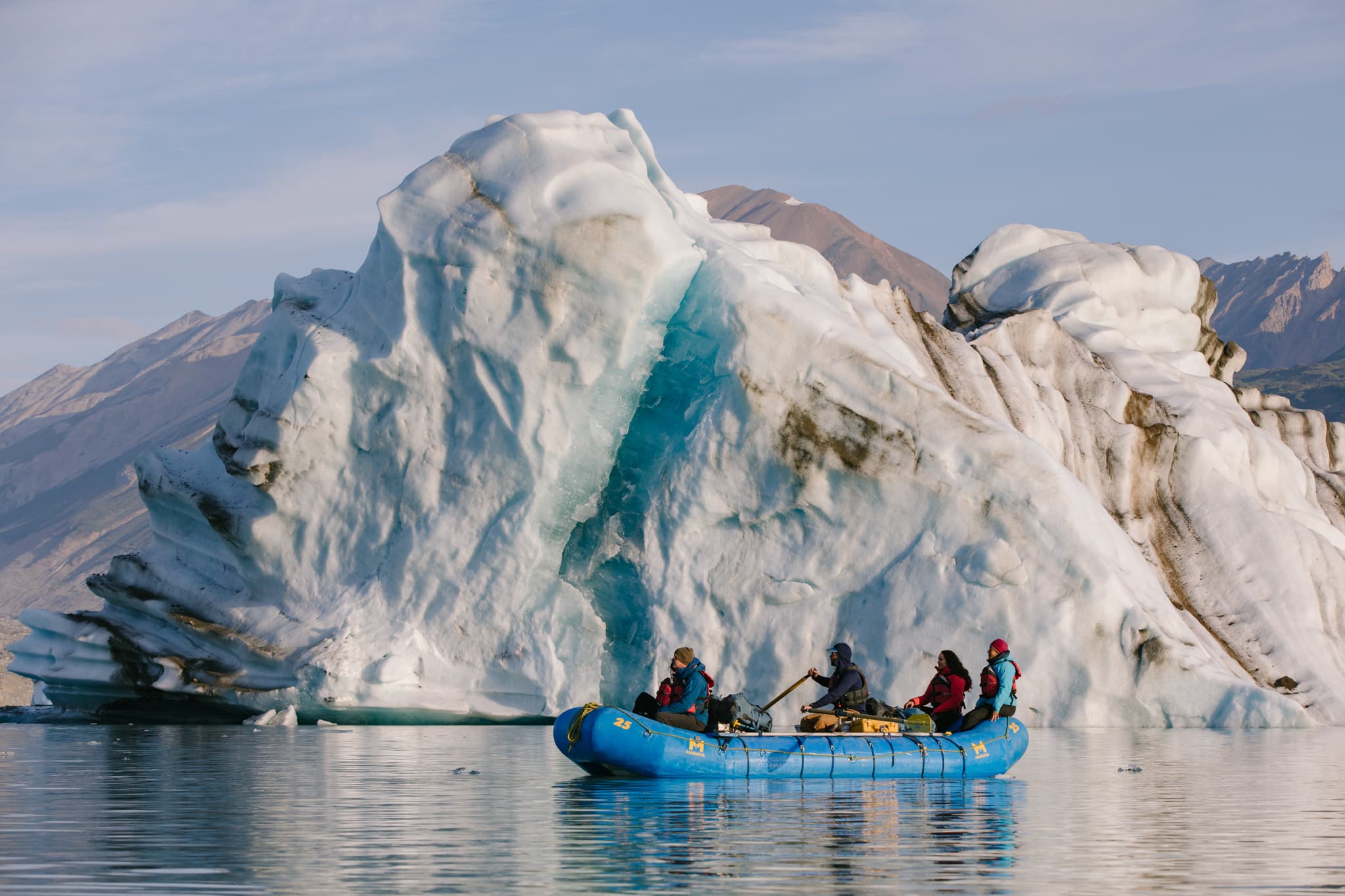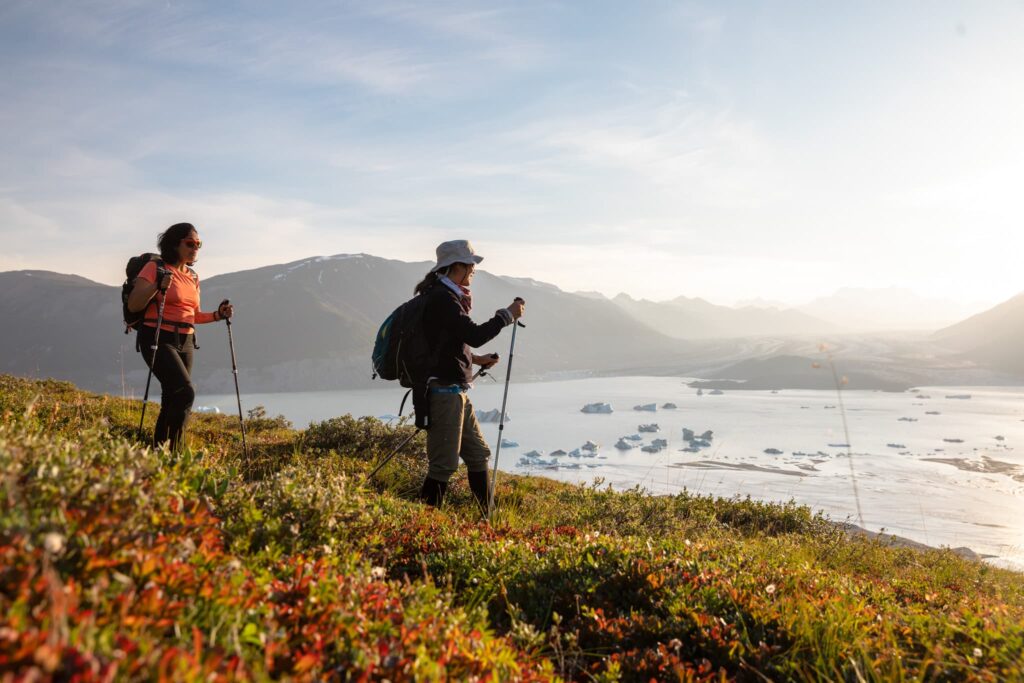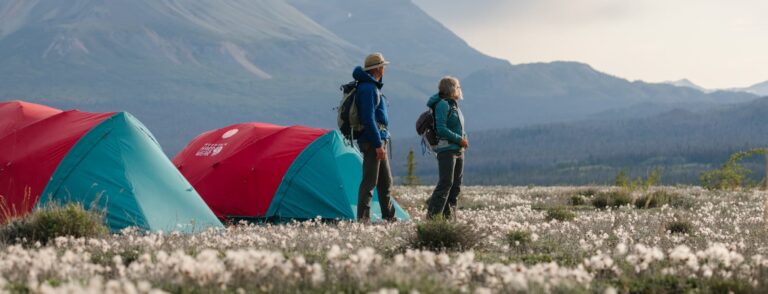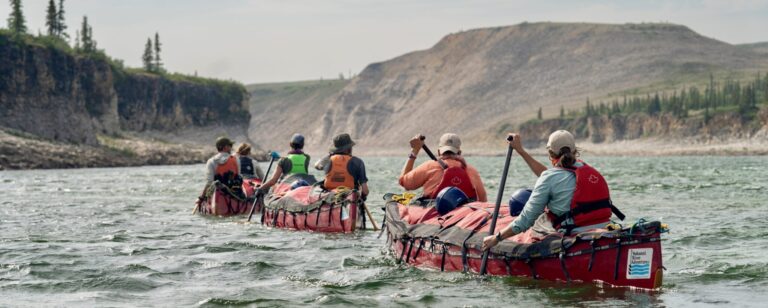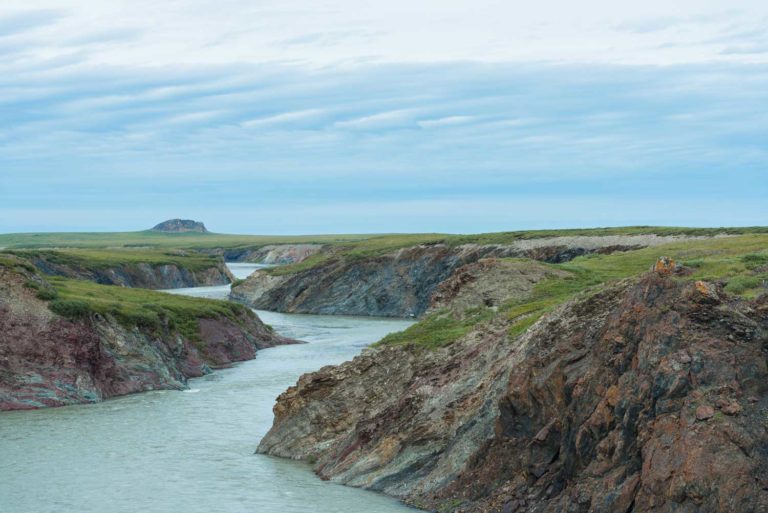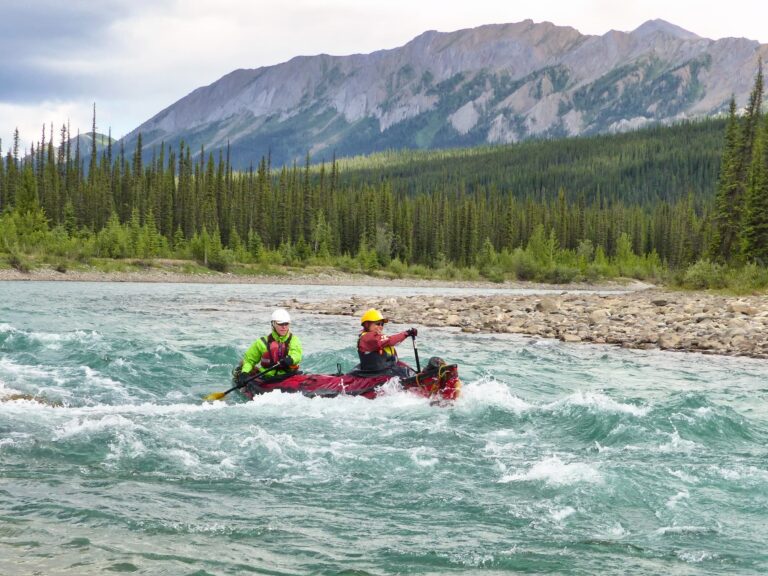In the late 80’s, the press reverberated with the name Tatshenshini due to a disputed mining project in the area. The ensuing publicity and environmental reportage echoed across North America in support of protecting this jewell of wilderness.
The press failed to mention, however, the Tatshenshini’s charismatic neighbour: the Alsek River.
The name Alsek comes from the Tlingit Ałsêxh, meaning “place where people rest”. Despite lying just one valley over from the Tatshenshini, the difference between the two rivers is dramatic.
Perhaps the best way to articulate the uniqueness of the river is to describe a journey on the Alsek.
Stark Beginnings
The first striking distinction is the alpine origins of the Alsek River, where we put in at Serpentine Creek. The broad valley lies within the boundaries of Kluane National Park, a UNESCO World Heritage Site, on the traditional territory of the Champagne and Aishihik First Nations.
It is distinctly representative of high altitude ecosystems; in June and July, the mountainsides are alive with the vibrant mosaics of wildflower displays, whilst later in August the first touches of fall colours paint the valleys in red, amber and golden hues.
Whereas the Tatshenshini takes a more delicate approach, beginning as a smaller, more intimate river winding its way through alder and aspen, the Alsek immediately immerses you in vast glaciated valleys and towering, jagged peaks to marvel at, setting the tone for the voyage of wonder to come.
A Fascinating Geological History
Spectacular recent geological events further distinguish the Alsek River. In the later half of the 1800’s, the river was entirely bridged by a sudden movement of Lowell Glacier. The resulting lake backed up over an area of hundreds of square miles, flooding surrounding communities including the present-day village of Dakwäkằda (Haines Junction).
The ice dam remained for a few years until it was finally broached by the river; in a cataclysmic event, the valley below was flushed by a flow of gargantuan proportion. Indigenous history tells of villages that were decimated by the floodwaters. When we travel the river today, we still see scarring and other effluvial remains that stand testament to this monstrous hydrological event.
Lowell Lake remains as evidence of this vast flood, and provides the location for our first layover day on the river. Remaining in camp for two nights, we take the opportunity to hike up Goat Heard Mountain. This alpine challenge is rewarded with panoramic views of the ice fields, including the tallest peaks of the mighty St Elias range.
This miniature expedition makes for an excellent opportunity to view some of the Alsek’s incredible flora and fauna more closely. Mountain Goats – the enigmatic alpine dwellers after which the mountain is named – are frequently spotted, as well as Dall sheep, eagles, grizzlies and the myriad wildflowers which bedeck the slopes.
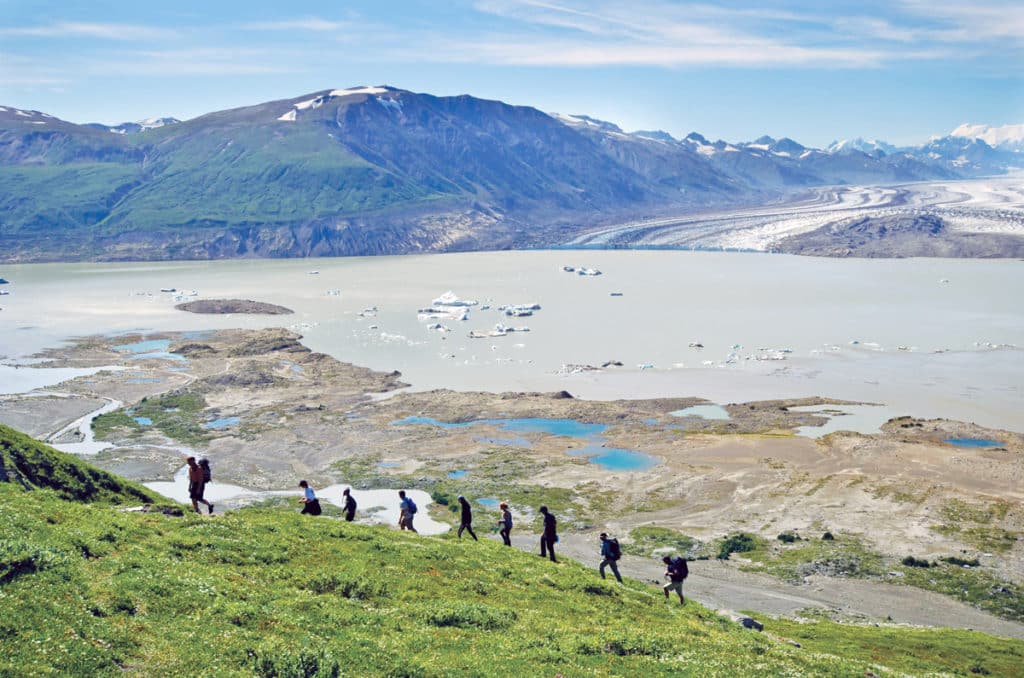
Rapids and Rotorblades
After we leave Lowell Lake, the mountains crowd inwards, forcing the river through a series of narrow canyons as fiery rapids. As we travel through the rocky chasms, we are granted an ever-dynamic vista of glaciers, talus slopes and snowy peaks.
Eventually we are confronted by the awe-inspiring Tweedsmuir Glacier, the largest of all the glaciers visible from the river. Acting like a huge funnel, it crowds the river into a deep gorge called Turnback Canyon. Here the river rears and plunges through a ten-mile series of Class V rapids. We spend a night camped above this raging inferno, soaking up the icey views of the world’s largest non-polar ice cap, the St Elias ice fields.
The drama continues to unfold the following day as a helicopter arrives at our camp to begin portaging us, and our equipment around Turnback canyon. The exhilerating flight grants us breathtaking views over the the canyon and the surrounding ice fields – and is often a highlight of the trip for many!
Once safely deposited on the other side of the canyon, our guide team re-inflates and re-rigs the boats, ready to continue the adventure downstream.
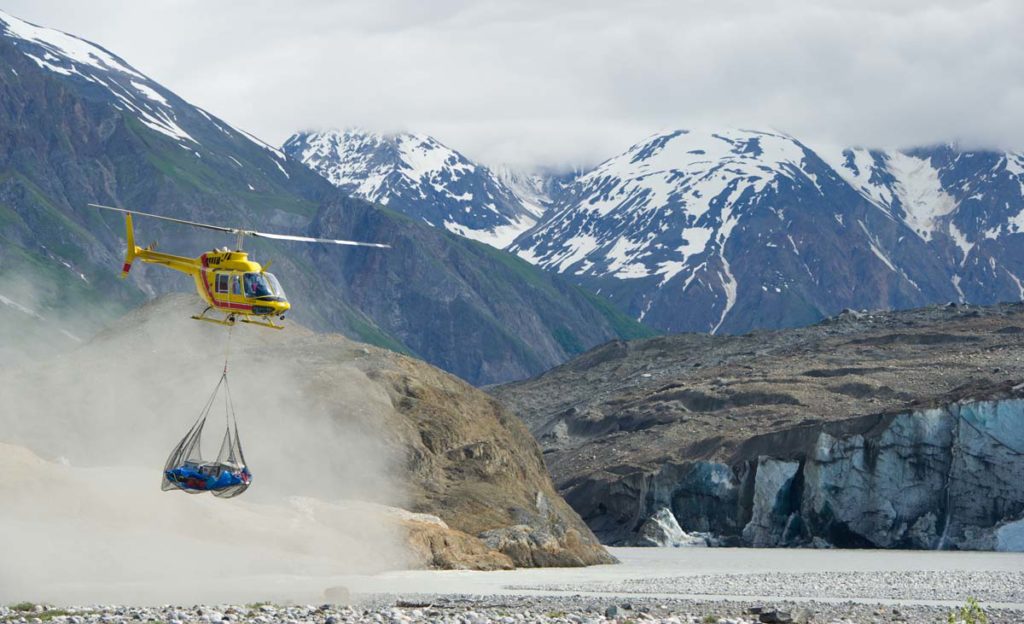
A Dramatic Convergence
Passing the Vern Ritchie and Battle Glaciers, we camp at the confluence of the Tatshenshini and Alsek Rivers. The two rivers converge into a three-mile wide stretch of choppy waves and whirling eddies, surging through braided channels which criss-cross the valley. The resulting waterway continues to bear the name Alsek and soon enters Tlingit traditional territory, in modern day Alaska and Glacier Bay National Park.
On reaching Kodak Corner, a giant bend that can be seen from space, we are encircled by knife-life peaks in a stunning amphitheatre of glacial ice and rock. Here we catch sight of the crystal blue hues of Walker Glacier, an ice river of deep crevasses, jagged seracs and dramatic ice falls. We typically stop for lunch and take a moment to soak up the landscape, watching nature’s mesmerising drama unfold before our eyes as Walker Glacier calves off with almighty crashes and waves.
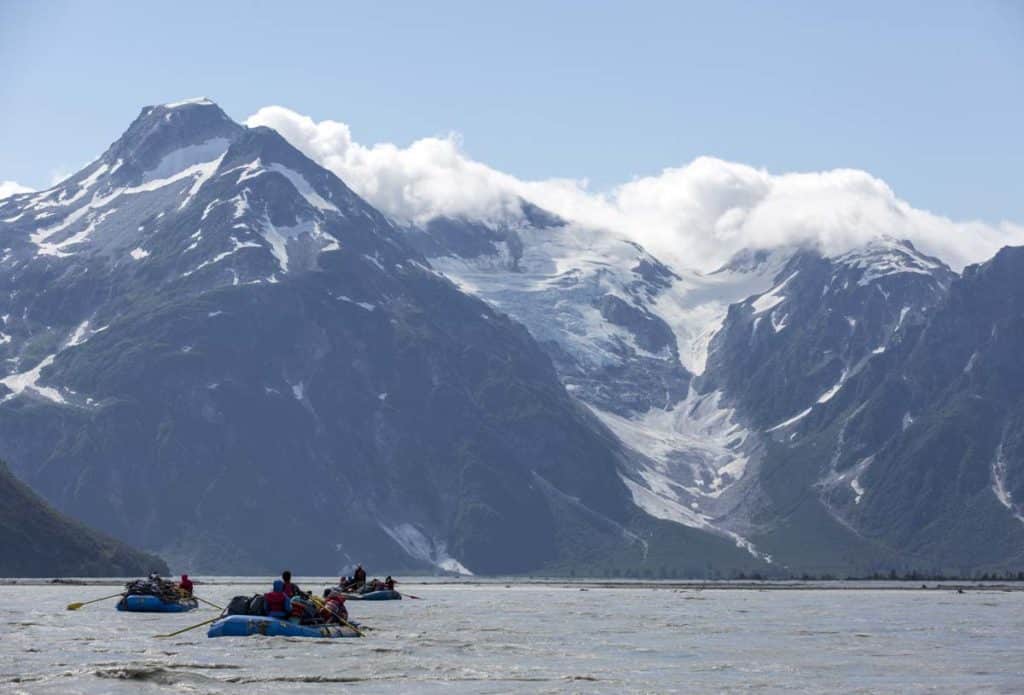
Witness the Raw Power of Nature
Floating downstream, more than 20 glaciers are visible as we make our way down to Alsek Lake, where the Alsek and Grand Plateau Glaciers come together at the river to form an impressive eight mile wide face of ice. Alsek Lake was formed by the deep gouging action of ancient glaciers and is the largest lake in present-day Glacier Bay National Park. We spend our final two nights camped on the shore, a timeless, almost ethereal scene where glacial zephyrs are met by salty breezes from the coast.
The scale of this landscape is truly awe-inspiring. Towering in the distance, on a clear day we’ll catch sight of the tallest coastal range mountain the world, Mount Fairweather, whose ice-clad summit soars over 15,000 feet above our campsite.
Alsek Lake possesses a serene, almost ethereal atmosphere, with a tranquil, meditative soundscape punctuated only by the explosive booms of glaciers calving into icebergs, colossal multi-tonne blocks of ice which have taken millennia to move through the valley and are now finally liberated to float freely.
Some make it all the way out to the Pacific Ocean; we will see a few escapees on our final rafting hours spent floating out to Dry Bay, a remote fishing community on the Alaskan coast. Here we are met by charter planes, ready for a final spectacular flight back to Whitehorse with memories to last a lifetime.
Ready to experience the untamed wilderness of the North?
Are you ready to discover the towering peaks, exhilarating whitewater and colossal glaciers of the Alsek?
Join us for the expedition of a lifetime!

